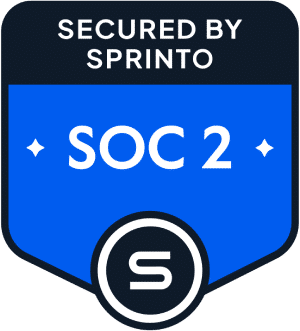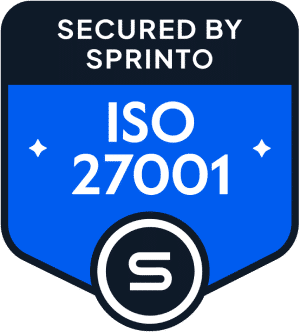5 Tasks to Complete for a Great SOC 1 Report
Many personal customers are blind to cyber security risks and compliance, but business customers are not. A prospective client may inquire about your organization’s cyber security and, by extension, any personal and financial information they store with you. It would be handy to show them a certificate of compliance with a set of industry standards; this is where System and Organization Controls (SOC) come into play.
Any financial institution or organization handling customers’ financial data will do well to prepare their organization for SOC 1 compliance. You should prepare for a SOC audit as early as possible, but better late than never.

What is a SOC 1 Report?
A SOC report is the result of an audit performed by a certified third party indicating your organization’s compliance with a set of standards defined by the American Institute of Certified Public Accountants (AICPA).
Back in 1992, the only financial report was SAS70, which was based on the relevant technology at the time. By 2011 SAS70 was used to report on complex IT system controls, which prompted AICPA to develop new SOC reports, those are SOC 1, SOC 2, and SOC 3.
SOC reports are performed by independent Certified Public Accountants (CPAs). A SOC report is the professional, respected, and unbiased opinion of your organization’s ability to securely and efficiently handle customer financial data.
Having produced a SOC 1 report gives customers assurances that you will handle their financial data safely and securely. There are two types of SOC 1 reports:
- A Type 1 report demonstrates that your internal controls meet SOC 1 standards for preventing transaction and statement errors at the time of the audit.
- A Type 2 report shows your organization’s long-term stability and risk mitigation over regular operations.
How can a SOC1 Report help you?
The more obvious benefit of a SOC report is earning customer trust. You’re presenting the client with some form of third-party oversight that ensures that they really are when you say your systems are secure and error resistant. SOC 1 is fundamental to customer retention and acquisition when financial data is involved.
The less obvious benefit is the third-party oversight itself. Even if your organization’s controls are substantial, a professional CPA can provide invaluable insight into improving and maintaining your existing controls. SOC reports can provide a deeper understanding of the current state of your controls and the way they might evolve in the future.
SOC reports are crucial for any organization looking to handle financial information. The earlier you prepare for a SOC audit, the better you will set up your organization to maintain a high level of compliance with industry standards.
What can I expect during the SOC examination?
The exact process for a SOC examination varies depending on the CPA you hire. However, in most cases, there will be various processes in place to find and assess any gaps, deficiencies, and potential weaknesses in your controls. This process will likely include providing the CPA with documents, logs, and access to all information about your present controls.
The audit can strain your IT and DevSecOps departments, and they should be prepared to spend the work hours in collaboration with the CPA to get the best report possible. Once the report is in, the CPA will offer avenues of remediation, including coaching. If you are adequately prepared for the assessment, those will be optional improvements that may benefit you and your client. You may need to issue corrective actions to secure compliance if you are not.

5 Tasks to Complete for a Great SOC1 Report
Preparing for a SOC report can be done at any stage of your organization’s lifecycle. You could implement the necessary controls and documentation from day one. More often than not, though, organizations will look to take on additional control in preparation for an audit. Either way, here are the steps you’ll need to take.
1. Define the scope of the audit
Understanding which services require an audit, what systems they run on, and where they are located is the first step in preparing for an audit. The customer needs should also be considered to ensure they are met and that you don’t erroneously pour resources into the wrong endeavor.
Sometimes a specialized service has a well-defined scope which will make this step more about documenting your needs. Other times there may be numerous services requiring different scopes of reports, which may lead you to choose to audit them separately.
2. Conduct a risk assessment
Performing an internal risk assessment will reveal any issues you may face during the audit. Knowing the risk to data and the readiness of your security systems and policies will help determine your preparedness for a SOC audit.
You may perform the risk assessment internally if you have qualified personnel on staff. Still, even then, many outsource risk assessment to a third party to reduce bias and get as honest an assessment as possible.
3. Consider your regulatory implications
SOC 1 is the basis of your financial assessment, but you may need to comply with other regulatory bodies based on your industry. Compliance with HIPAA/HITECH for healthcare, SOX for publicly traded companies, PCI Standards for those handling credit cards. These all may have implications on your SOC report. Compliance may also change based on locale, so ensure you’re following the regulatory bodies’ requirements relevant to you.
While SOC is voluntary, regulatory compliance is not. Take advantage of the SOC report preparation process to enhance compliance with regulatory requirements. If you’re already hiring professionals, give them a complete picture of your regulatory responsibilities.
4. Check your controls
Every organization has a different set of controls for different needs. Whatever your existing controls, you must document them and assess their effectiveness. You might find that while evaluating the controls, you find deficiencies, and you’d do well to address them now rather than wait for the audit. Generally speaking, controls fall into one of four categories.
Physical controls
Physical controls are about access to your facilities, such as servers, networks, administrative files, and offices. Maintain access control to authorized personnel, a log of anyone that has gained access, and possibly video surveillance. If there are sensitive areas, they must include more strict controls.
Security controls
Security controls may seem the most obvious, but there is some nuance, and it covers a lot of ground. The CIA of security stands for Confidentiality, Integrity, and Availability.
- Confidentiality is about restricting access to sensitive data, preventing leaks, and securing data from potential theft.
- Integrity is maintaining coherent and error-free data. If data becomes corrupted, the integrity of the information has been compromised.
- Availability is keeping track of all the data in your possession. It is easy to lose access to essential data in the cloud.
A high level of CIA is a promise to your customers that their data is safe, whole and that you can give it to them if and when they need it.
Operational Controls
The day-to-day operations of a technological company can produce securities issues at any point. Operational controls are about maintaining the validity and efficiency of controls throughout regular operations. If you’re a software development company, you must catch bugs and security issues before they hit production. Suppose you’re using cloud-based technologies (which almost every organization is these days). In that case, you must show your IT department maintains control of credentials and access permissions to any cloud software you use.
Data will flow across your organization, and it is vital to track the data along any paths it may take so you can evaluate your controls at every step.
Availability Controls
Maintaining your services‘ availability policies and procedures are high on customers‘ shopping lists. What happens if you have downtime? Do you have a disaster recovery plan? Do you run periodic backups? Do you monitor your networks?
Answering these questions will help prepare you for the SOC audit and make your product more appealing to your clients.
5. Train your staff
All the security controls in the world and the best security policies will not stop human error and social engineering. Without adequate employee training, data will leak, errors will occur, and information will be lost. Having a security-aware culture in your organization is, without a doubt, the basis of a secure organization.
Employees must have training specific to their roles. They need to understand company policies and comply. You cannot maintain security awareness without regular and comprehensive training that engages staff.
Building security from the ground up
CybeReady provides a complete, fully-managed training program that transforms security culture. We have training specifically for the banking industry, manufacturing industry, and pharmaceutical industry. This training is at your fingertips, without straining your overworked IT departments.
Once your staff understands your organization’s security needs, you’ll be able to complete all other tasks with the help of your entire workforce, rather than only your IT staff. Book a demo today, and start building your security culture at your organization.



















